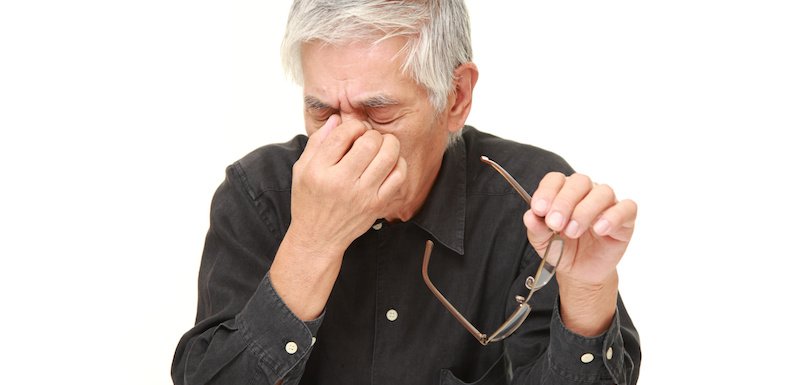
Cancer pain affects one in three people with cancer. If patients are in late-stage cancer or have experienced metastasis or a recurrence of cancer, the chances of experiencing cancer pain are even higher. Cancer pain has many different causes, each one of which may respond differently to treatment. Here’s how you can manage your cancer pain.
What causes cancer pain?
Cancer pain has the capacity to cause both acute and chronic pain. Acute pain is short term and usually lasts just the duration of an illness or injury. In cancer patients this is often related to surgery and can be kept under control with pain medications until the site is fully healed.
Chronic pain can be harder to treat. Acute pain can turn into chronic pain and can create long-term issues. Chronic pain is generally defined as any pain lasting three months or more. It often has a hard time responding to pain medications or other treatments and can cause additional problems for a cancer patient including depression and anxiety.
Cause #1: The cancer itself
Cancerous tumors that are growing in the body can place tremendous pressure on surrounding tissues, organs, muscles, and bones. Over time, this pressure can become painful, especially if the tumor is not responding quickly to treatment. One common type of this cause of pain is spinal cord compression. Tumors growing close to the spine can pinch nerves, causing debilitating pain.
Cancer that moves into the bones can also cause deep, difficult-to-treat pain.
Additionally, late-stage cancers can put out chemicals that cause aching joints and muscles. This type of pain can be difficult to diagnose, as the cause is discreet and difficult to detect in the body.
Cause #2: Cancer treatment
It is an unfortunate paradox that treatment for cancer can cause tremendous pain for the patient. In addition to the chronic pain that can arise as a result of surgical removal of tumors, including mastectomy for breast cancer, surgery for a cancer patient can be difficult to recover from. The body’s immunity is already compromised, and post-operative infections can cause pain and other complications.
Other treatments like radiation can cause burns on the skin that can be severe. Chemotherapy is a cocktail of chemicals that can also cause pain for some patients. Another type of pain that can be caused by chemotherapy is peripheral neuropathy. This occurs when chemotherapy destroys nerves and results in burning, tingling, or shooting pain, usually from the extremities.
Both chemotherapy and radiation can cause painful mouth sores.
Cause #3: Concurrent physical conditions
Cancer patients may have a pre-existing pain condition such as arthritis, low back pain, or migraines that may worsen with a decrease in activity due to the side effects of cancer treatment. Although patients may have had a successful treatment plan in place, this type of pain needs to be accounted for and potentially modified in the face of a cancer treatment plan.
Other physical conditions that often lead to pain with cancer include:
- Soft tissue pain: This is a form of chronic pain that can be difficult to identify. It is typically caused by damage to soft body tissues such as the kidneys. Often, you’ll feel it like cramping, aching, or throbbing. It can be caused by damage inflicted by the cancer itself or various forms of treatments.
- Bone-related pain: One of the most insidious aspects of cancer is the rate and way in which it spreads. When it reaches the bones it can cause extreme pain which feels like throbbing or a dull ache. Because of the nature of bone related cancer pain, it can be very difficult to treat and can quickly escalate.
- Phantom pain: Finally, one of the most mysterious forms of pain related to cancer surgeries is phantom pain. When a part of the body is removed to stop the spread of cancer, some patients continue to feel pain in the area of the body that is no longer there. It is believed this is a form of nerve pain but it can also be difficult to treat with conventional means.

Diagnosing cancer pain
Diagnosis of cancer pain often involves a patient interview using a pain scale (0-10). The doctor may ask about the location, duration, and sensation of pain (sharp, stabbing, aching, etc.). They will also carefully examine current treatments for cancer (medications, chemotherapy, etc.) and ask general health questions regarding diet and activity levels.
Again, cancer pain is not always consistent. Acute pain is pain that is short-lived and responds well to treatment. Chronic or persistent pain lasts for longer than three months and is not typically resolved easily. Finally, breakthrough pain is sharp, intermittent, and independent of other types of pain in that it can occur even when other pain has been successfully treated. Breakthrough pain is short-lived but intense and often debilitating.
How to treat cancer pain
There are so many forms of cancer and each one responds differently to treatment and holistic health practices. Cancer pain can affect every aspect of a patient’s life. Mood and outlook can be drastically influenced by levels of pain. Because of this, it is important to talk to your doctor about any pain you may be experiencing.
Once the doctor determines what type of cancer pain is present and the potential cause, a treatment plan will be put in place. Many studies have shown that healthy living benefits cancer patients in many ways. Not only does this include a healthy diet and good stress management but also exercise. Physical activity supports our body’s immune system, muscles, and overall health.
Here’s some of your options for treating cancer pain.
Exercise
According to the American Cancer Society, exercise may be the perfect addition to traditional cancer treatment. Early medical instincts to instruct a cancer patient to rest appear to have caused more long term-pain than suggesting exercise. A lack of physical activity will cause the body to lose much of its natural function and range of motion. Today, doctors are encouraging cancer patients to exercise as regularly as possible during cancer treatment.
This suggestion is backed up by several studies including this one conducted by the University of Pennsylvania. Their research indicates that chemotherapy in conjunction with exercise reduces tumor sizes more than in cancer patients receiving chemotherapy alone.
From lead researcher, associate professor Joseph Libonati:
“People don’t take a drug and then sit down all day. Something as simple as moving affects how drugs are metabolized. We’re only just beginning to understand the complexities.”
Benefits of exercise
There are many benefits of exercise for cancer patients that have been observed over the years. With appropriate exercise, a patient may be able to:
- Keep or even improve their own physical abilities
- Improve their balance which will reduce the risk of falling or further injuries, such as broken bones.
- Make sure their muscles don’t waste away due to inactivity
Exercise for cancer patients also reduces the risk of heart disease, osteoporosis, blood clots, and poor circulation. Exercise also has additional benefits of allowing cancer patients to feel more independent. It improves self-esteem, and lowers the risk of anxiety or depression. It can also help control weight and lessen nausea as well as fatigue. Exercise can improve the overall quality of life for cancer patients.
Safe exercises for cancer patients
Of course, just because exercise is good for cancer patients doesn’t mean that there aren’t risks. It is important to remain safe while exercising. Talk first with your doctor about the most appropriate workout plan for you.
Here are some suggestions for safer exercises:
- Walking or biking in your neighborhood
- Swimming or water aerobics
- Yoga
- Safe weight and strength training

Complementary therapies
There is growing evidence that complementary therapies are an important part of a cancer treatment plan.
Acupuncture has been shown to dramatically relieve breakthrough cancer pain quickly with few side effects. Yoga, hypnotherapy, t’ai chi, and aromatherapy have proven successful in reducing stress, anxiety, and depression in cancer patients. These reductions contribute to a significant improvement in a cancer patient’s quality of life.
Supplementation
Vitamin D has been shown to help with cancer pain experienced by women as a result of mastectomy to treat breast cancer. Deficiency of the “sunshine vitamin” has been linked to a variety of conditions, including joint and muscle pain as well as leukemia, so this treatment for cancer pain makes sense.
Counseling
While talking about pain may not make it go away, counseling, whether one-on-one or in a supportive group, can help cancer patients to better deal with symptoms when they do arise.
Battling a life-threatening illness can be very isolating, and as hard as they try, family members may not be able to fully understand a cancer patient’s experience. Finding a positive, informative group or therapist can help you to develop strategies and coping mechanisms for cancer pain.
Medications
Other pain management tools may include medications. Your doctor will likely first suggest over-the-counter (OTC) medications. These can include analgesics, such as ibuprofen and acetaminophen. Some OTC medications will help address inflammation that may be caused by chemicals being emitted from tumors or from post-operative inflammation.
For severe acute pain that doesn’t respond to other treatments, opioids may help. Although opioids are not indicated as a successful treatment for chronic pain, they may be prescribed for acute or breakthrough pain. These can include morphine (Avinza, Ms Contin, others), oxycodone (Oxycontin, Roxicodone, others), hydromorphone (Dilaudid, Exalgo), fentanyl (Actiq, Fentora, others), methadone (Dolophine, Methadose), or oxymorphone (Opana).
Get help
You may feel that pain is part of cancer treatment, but this is not necessarily the case. While some pain is associated with surgery and is to be expected with radiation, chemotherapy, and the growth of tumors, this does not mean that it should not be part of your overall cancer treatment plan.
There are ways someone can help alleviate their own pain through whole body health. A holistic practice not only treats the body and the symptoms but also the mind and beyond to provide better long-term balance in a cancer patient. Do not hesitate to talk with your doctor or reach out to a qualified pain specialist when appropriate about your options.
For more on cancer pain, including managing pain and an online class to help develop coping strategies, visit the American Cancer Society’s page on cancer pain.